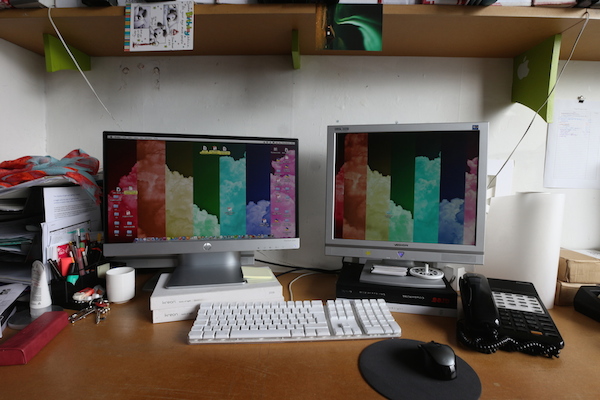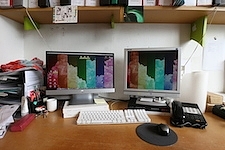Above you will see two images of my work station in the KSLD studio. The one of the left is daylight only, measuring 650 lux; the one on the right is both daylight and artificial light, measuring 815 lux. Noting the amount of light (horizontal illuminance) in both cases, someone could say that there is plenty of light in order to fulfil the light requirements for the task area, giving an amount of light more than regulations indicate. However, in the first case where there is only daylight, I don’t feel that there is enough light and that it is not a comfortable visual environment for work. In contrast, in the second scene where there is both daylight and artificial light, even if the light levels don’t change dramatically, the visual perception that I have is this one of a brighter space where there is visual comfort to better complete tasks.
In trying to understand and explain the reasons for this, I will build my explanation upon two points.
One point is the geographical and visual references that I have since I come from Greece, a country that has quite different daylight conditions than Scotland. It is not only the daylight conditions that provide a brighter outdoor atmosphere but that usually is transferred to the indoor environment where we usually prefer brighter atmospheres than in Northern Europe. Having spent four years in Sweden and one in Scotland, I could say that our visual memories and references are really strong and are important to creating a visual atmosphere where we feel comfortable enough.
The second point is the vertical illuminance and luminance. Recommendations and regulations usually take into consideration only the horizontal illuminance. However, it is really important to think and design while also having in our minds the vertical illuminance, the luminance in the space and the visual perception of the user. Taking all the above into consideration and keeping in mind the three dimensionality of the space, we can deliver a better visual result. In recent years this combination of variables is an ongoing discussion in the field of lighting design. It is definitely time to consider the luminance and visual perception in our lighting design projects.
Efi Stragali 27 July 2015





